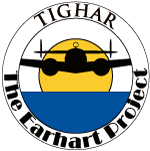Results
A. General Findings
The majority of faunal materials (90%) were from birds, with much smaller amounts of bone coming from fish, rat, and unidentifiable vertebrates. Table 2, below, contains the absolute and relative proportions of bone within general proveniences, by zoological class.
Table 2: Absolute and Relative Proportions of Bone Identifications by General Provenience & Zoological Class
B. Non-Avian Remains
Since the Pacific Rat is represented by only two bones, there is not much to be learned from its presence in the faunal assemblage. Rattus exulans is classified as an alien species on Nikumaroro and has been deemed invasive (Pierce et al. 2006). According to an unpublished conservation management plan for the Line and Phoenix Islands, prepared by Martin Garnett in 1983, Rattus exulans arrived on Nikumaroro in pre-Contact times. More recently, the Invasive Species Specialist Group (2006) stated that the Pacific Rat reportedly arrived on Nikumaroro in 1942; no sources are given for this statement.
Little can be said about the origins of the bone attributed to “Medium Vertebrate.” All of these specimens are very fragmentary and in poor condition. While some of the specimens resemble turtle bone nothing definitive can be said in the absence of identifiable skeletal elements. It is also possible that some of the specimens attributed to “Medium Vertebrate” are either from a boney fish or a mammal. Garnett (1983) also says that there were populations of feral dogs and cats on the atoll at the time of his writing, perhaps in the late 1970s or early 1980s. A 2006 survey done in conjunction with the preparation of a restoration plan prepared for Kiribati by Conservation International Samoa and Pacific Islands Initiative (2006) found no evidence of feral cats or dogs on Nikumaroro. The same survey recorded one turtle nest on the atoll although the species was not identified. The Green Turtle (Chelonia mydas) was previously recorded as being indigenous to Nikumaroro (Garnett 1983). In view of these records, it seems possible that “medium vertebrate” remains can come from more than one zoological class.
C. Avian Remains
Of the 2,433 bones identified as avian, 494 (approximately 20%) could be identified to a level of Family or lower. Three Pelecaniform Families – Phaethonidae, Sulidae, and Fregatidae – were represented in the TIGHAR specimens. It is likely that the remains assigned to the categories of “Medium aves” and “Large aves” come from individuals in Sulidae or Fregatidae given the sparse numbers of Phaethonid remains identified. The remains assigned to “Medium aves” or “Large aves” were so fragmentary that they could not be identified beyond zoological class. In most instances, the skeletal portions called “Medium aves” comprised long bone fragments although some axial specimens – vertebral or synsacral fragments – were also present. With regard to the 3 identified bird taxa in the TIGHAR collection, skeletal remains from the Red-footed Booby (Sula sula) were the most numerous (NISP=260) followed by those of the Lesser Frigatebird (Fregata Ariel) (NISP=154).
Identifiable skeletal elements by general region of the avian body were tabulated by taxon across all proveniences for S. sula and F. ariel, the two most commonly identified species; Tables 3 and 4 contain these figures, below.
Table 3: Identified Elements of Sula sula by Cluster
Table 4: Identified Elements of F. ariel by Cluster
In general, bones of the upper limb or wing (humerus, ulna, radius, carpometacarpus, and carpal digits) and the thorax (scapula, clavicle, coracoid, furcula, sternum, vertebrae, and synsacrum) dominated the collections of remains identifiable to species. 73% of the skeletal elements identified as coming from the Red-Footed Booby were wing and thorax bones, while 86% of the bone identified as the Lesser Frigatebird came from the wing and thorax regions of the skeleton.
A small number of the avian remains came from juvenile individuals. The periosteal surfaces of the specimens had the characteristic grooved and pitted appearance of immature bone. Table 5, below lists the NISPs of juvenile bone found in each of the major clusters.
Table 5: NISPs of Juvenile Bird Bone from TIGHAR Clusters
In addition to the remains of immature birds, a possible eggshell fragment was found in one provenience from Cluster 4.
Some avifaunal remains showed evidence of exposure to heat in the form of charring and perhaps calcination. Charring is distinguished by a dark gray-black appearance and may be indicative of relatively short-term exposure to a fire that is lower in temperature (Bennett 1999). By contrast, calcined bone is a lighter gray or white in color, indicating longer exposure to a fire that is higher in temperature (Bennett 1999). It should be noted that at least some of the bone from TIGHAR project areas may be grayish-white in color due to exposure to the elements rather than due to burning. Table 6 presents the NISPs of charred and calcined bone by zoological class by general provenience.
Table 6: NISPs of Burnt and Calcined Bone by Zoological Class from TIGHAR Clusters
Discussion
Avifaunal remains attributed to “Medium Aves” may be derived from Sula sula and Fregata ariel, given available information on these species’ populations on Nikumaroro. Brief and limited bird surveys dating to the mid-1960s on Gardner Atoll term both the Red-footed Booby and Lesser Frigatebird a “fairly common resident” while the White-tailed Tropicbird and Red-tailed Tropicbird are classed as an “Uncommon Visitant” (Clapp n.d.). By the mid-2000s, better estimates of bird populations were available as compiled from multiple surveys over the years (Gupta 2007). Table 3, below, contains historic data on the population estimates for the four species identified in the TIGHAR remains along with the 2007 compiled estimate of population sizes on Nikumaroro:
Table 7: Historic Data on Population Estimates for Four Avian Taxa on Nikumaroro
1=Clapp n.d. 2=Sibley & Clapp 1967 3=Pierce et al. 2006 4=Gupta 2007
Limited data obtained from recent archaeological investigations in the Phoenix Islands (excluding McKean and Nikumaroro) suggest that Sulidae were part of human diets, in pre-Contact times. Test excavations yielded bird bone in midden recovered from trash pit associated with prehistoric raised rectangular platform on the island of Manra, which lies about 370 kilometers to the east of Nikumaroro (Di Piazza & Pearthree 2004). A brief examination of these bones by the late Alan Ziegler, a noted zooarchaeologist, indicated that all of the larger bird remains could be attributed to Sulidae (Booby Family); no chickens, frigatebirds, or tropicbirds were represented in the midden (Di Piazza & Pearthree 2004). The authors (Di Piazza & Pearthree 2004) obtained one radiocarbon date suggesting an occupation beginning no earlier than the 13th century A.D.
Gupta’s (2007) assessment classifies all four of the identified avian taxa as “Resident Breeders” on Nikumaroro, which could explain the presence of juvenile individuals. The juvenile avian bone found in the TIGHAR faunal remains probably comes from nestlings since the young of the Red-Footed Booby fledge at about 90 – 100 days after hatching (USFWS 2005) although this may vary slightly by locality. Data on the length of time in which the bones of subadult birds become adult in size and appearance are very scarce, even for domesticated birds like ducks or geese. Unfortunately, data on nesting or breeding seasons for these species are sparse. A historical account (Child 1960) pertaining to bird populations of the Phoenix Island Group and a recent pan-Pacific assessment of seabird species provide the following information on nesting seasons:
With regard to skeletal elements identified as S. sula and F. ariel and their relative proportions of the entire skeleton (Tables 3 and 4, above), it will be noted that the NISPs of leg bones in both taxa are considerably lower than those for the wing bones and thorax. There is nothing about the condition of these bones to suggest differential preservation or some other environmental factor that would affect one region of the skeleton more than the other. Macroscopic inspection did not reveal any undue breakage or excessive damage to the lower limbs as opposed to wing or thorax bones. Similarly, there is no direct evidence that some human practice or preference has affected preservation. It should be noted, though, that the bulk of available meat from seabirds such as the booby or frigatebird would be found in the wing and thorax areas of the skeleton. Like a number of other seabirds, frigatebirds and boobies have lower limbs that are reduced in size since they rely on extended flight in acquiring their food. Nonetheless, in the absence of any cultural or natural process, lower limb bones should be equally represented in the collection.
References Cited
| Bennet, Joanne L. 1999. |
| |
Thermal Alteration of Buried Bone. Journal of Archaeological Science(1999) 26, 1-8. |
| Child, Peter. 1960. |
| |
Birds of the Gilbert and Ellice Islands Colony. Atoll Research Bulletin No. 74. Washington, D.C.: Pacific Sciences Board, National Academy of Sciences – National Research Council. |
| Clapp, Roger. N.D. |
| |
Field notes and partial manuscript on the Avifauna of Gardner Atoll. |
| Di Piazza, Anne and Eric Pearthree. 2004. |
| |
Sailing Routes of Old Polynesia. The prehistoric discovery, settlement and abandonment of the Phoenix Islands. Bishop Museum Bulletin in Anthropology II. Honolulu: Bishop Museum Press |
| Garnett, Martin C. 1983 |
| |
(Unpublished). A Management Plan for Nature Conservation in the Line and Phoenix Islands. Available from http://www.mauichalet.com/li/, accessed June 1, 2011 |
| Global Invasive Species Database Website, Entry on Distribution of Rattus exulans. 2006 |
| |
(http://www.issg.org/database/species/distribution_detail.asp?si=170&di=15841&sts=sss&lang=EN, Accessed May 31, 2011) |
| Gupta, Anuradha. 2007 |
| |
Proposed Important Bird Areas (IBAs) in Kiribati. Prepared for Birdlife International Pacific Partnership. Suva, Fiji. |
| Pierce, R.J., T. Etei,V. Kerr, E. Saul, A. Teatata, M. Thorsen, G.Wragg. 2006 |
| |
Phoenix Islands Conservation Survey and Assessment of Restoration Feasibility: Kiribati. Report Prepared for Conservation International Samoa and Pacific Islands Initiative, Auckland University, Auckland, New Zealand. |
|






